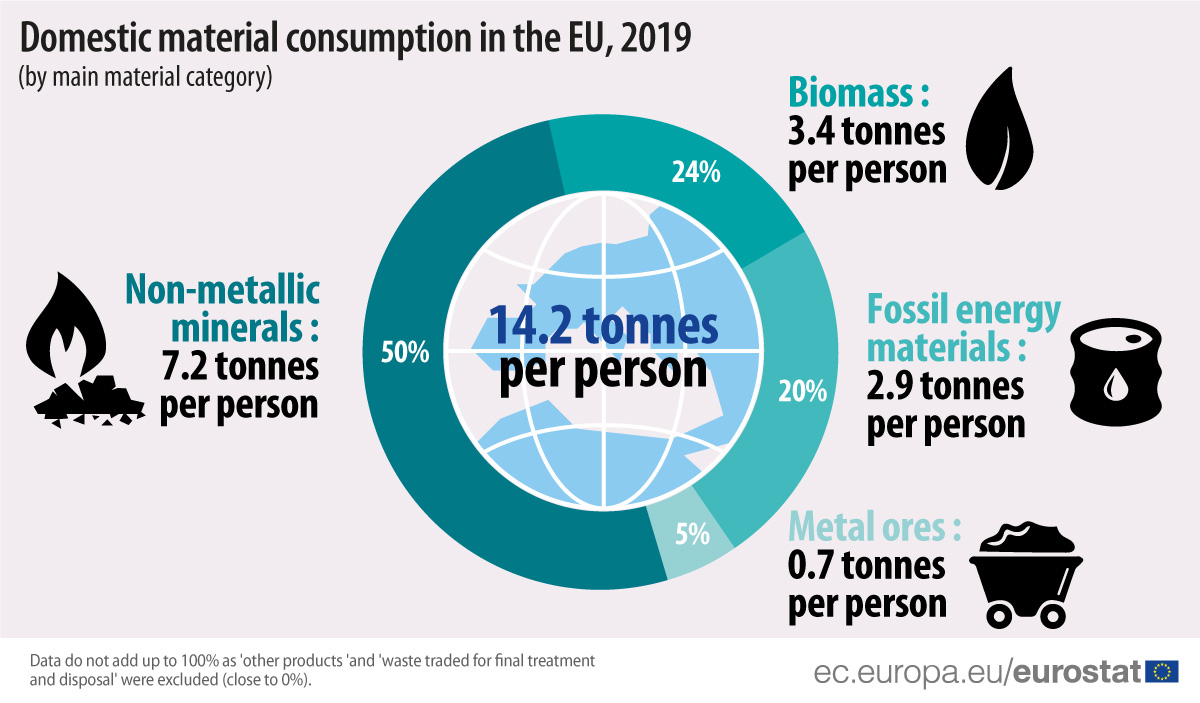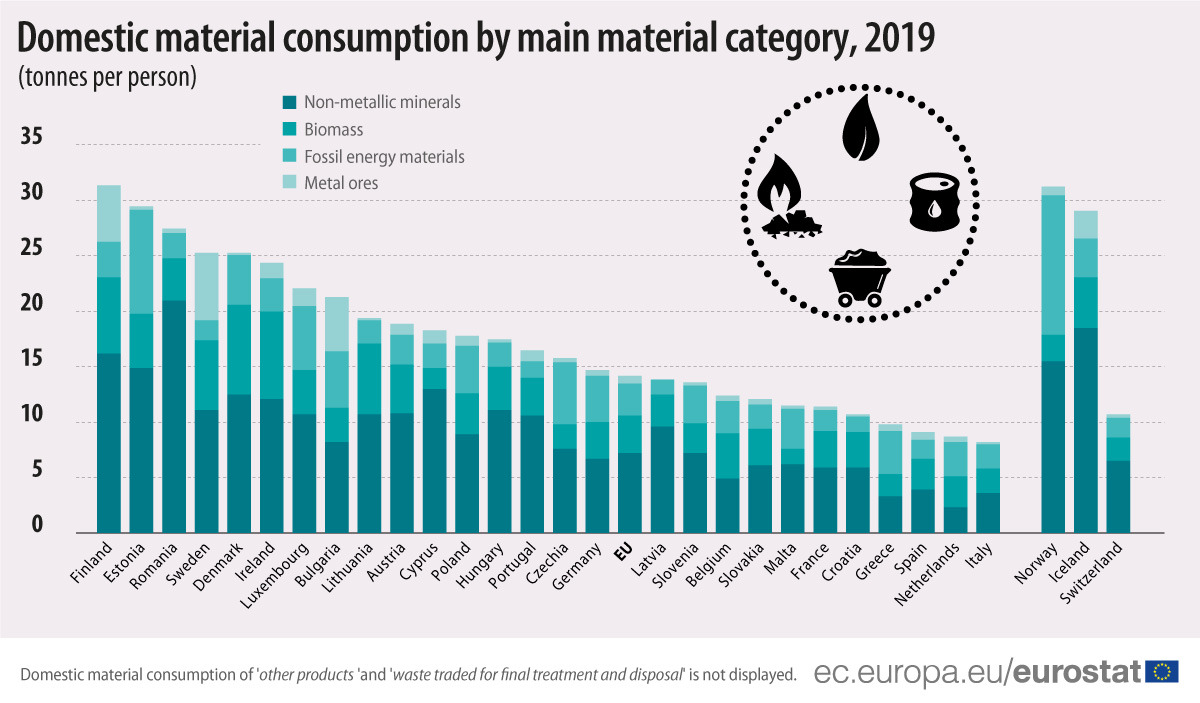The domestic material consumption of the EU economy stood at 14 tonnes per person in 2019. Non-metallic minerals account for half of this total, biomass for almost a quarter (24%), fossil energy materials for a fifth (20%) and metal ores for 5%.
Source dataset: env_ac_mfa
An analysis of domestic material consumption by material category conveys the relative importance of various materials and their potential for reuse, recovery or recycling. Over time, the consumption patterns of these material categories has evolved differently. Since the start of the millennium, the consumption of biomass has been fairly stable, unlike the consumption of metal ores and non-metallic minerals, which was particularly influenced by the financial and economic crisis of 2008-2009. The consumption of fossil energy materials gradually decreased over the past two decades.
Differences in material consumption across the EU
The level of domestic material consumption differs significantly across the EU Member States: from 8 tonnes per person in Spain to almost 32 tonnes per person in Finland. Domestic material consumption in each country is influenced by natural endowments with material resources, which may form an important structural element of each economy.
Source dataset: env_ac_mfa
Furthermore, consumption of the main material categories also varies across EU Member States. In 2019, consumption of non-metallic minerals ranged from 2 tonnes per person in the Netherlands to 21 tonnes per person in Romania. Cross-country differences can be a result of varied levels of construction activity (investments), population density and size of transport infrastructure such as road networks.
Biomass consumption also varies greatly across the EU: from a tonne per person in Malta to 8 tonnes per person in Denmark and Ireland. Economies with high biomass consumption are often specialised in timber production (Finland) or certain livestock production (Ireland, Denmark).
Consumption of fossil energy material stood at around 3 tonnes per person at EU level and differences across countries were less marked.
For more information on country differences and other aspects of material flows, you can read the Statistics Explained article on material flow accounts and resource productivity.
For more information:
- Eurostat website section dedicated to material flows and resource productivity
- Eurostat metadata on material flow accounts
- Eurostat Statistics Explained articles on material flow accounts and resource productivity, resource productivity statistics and physical imports and exports
- Energy Union and Climate priority of the European Commission
To contact us, please visit our User Support page.
For press queries, please contact our Media Support.



